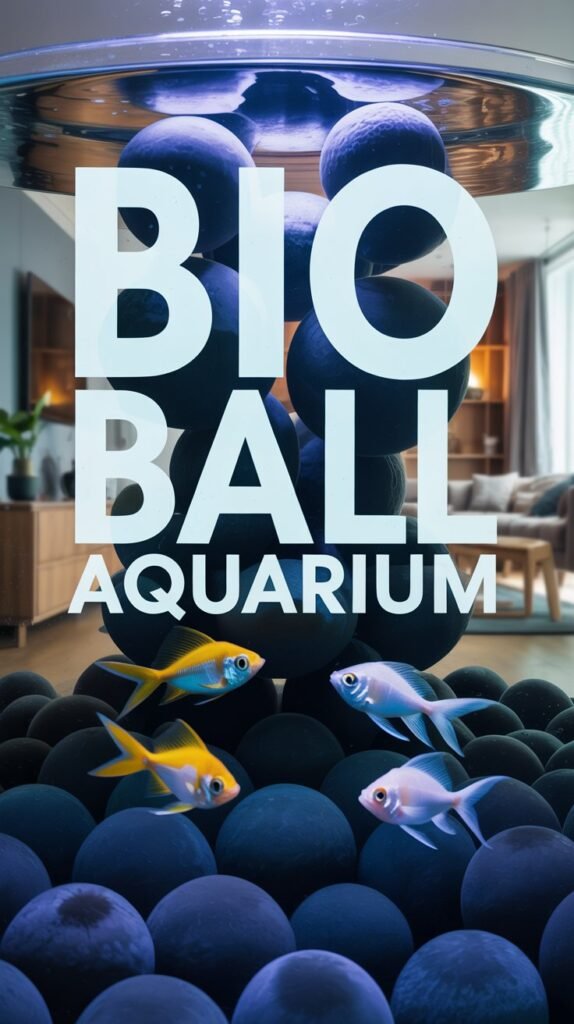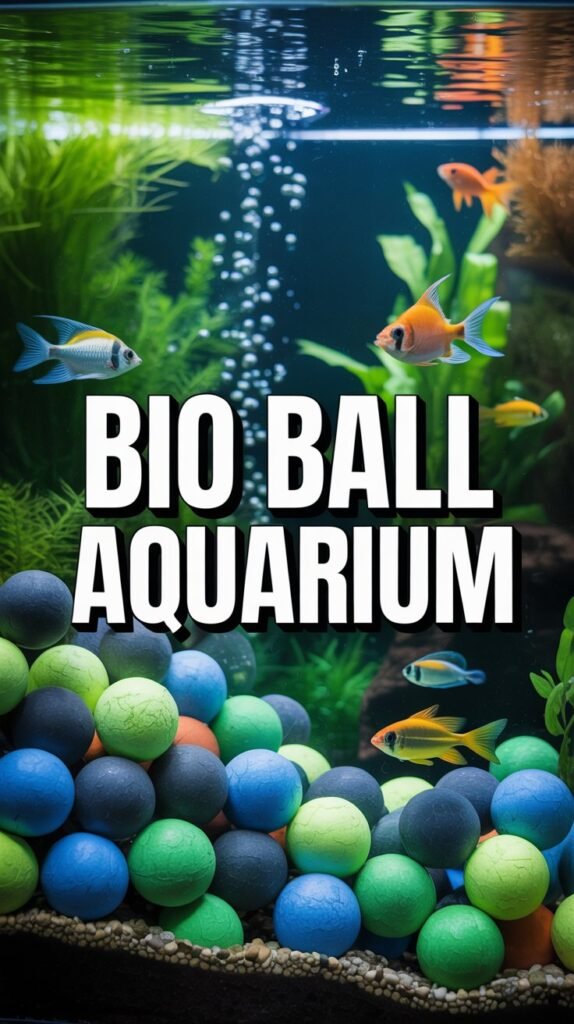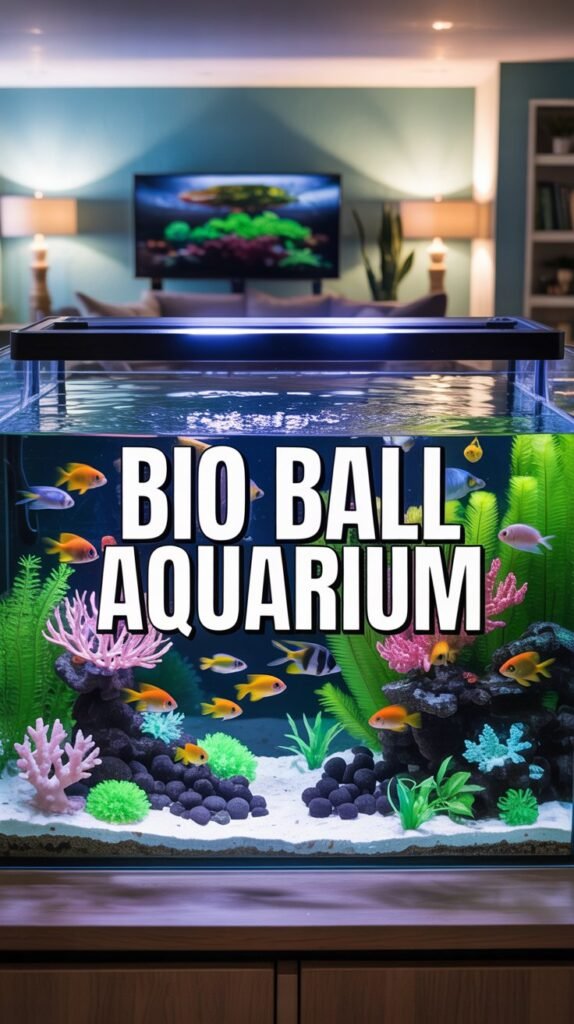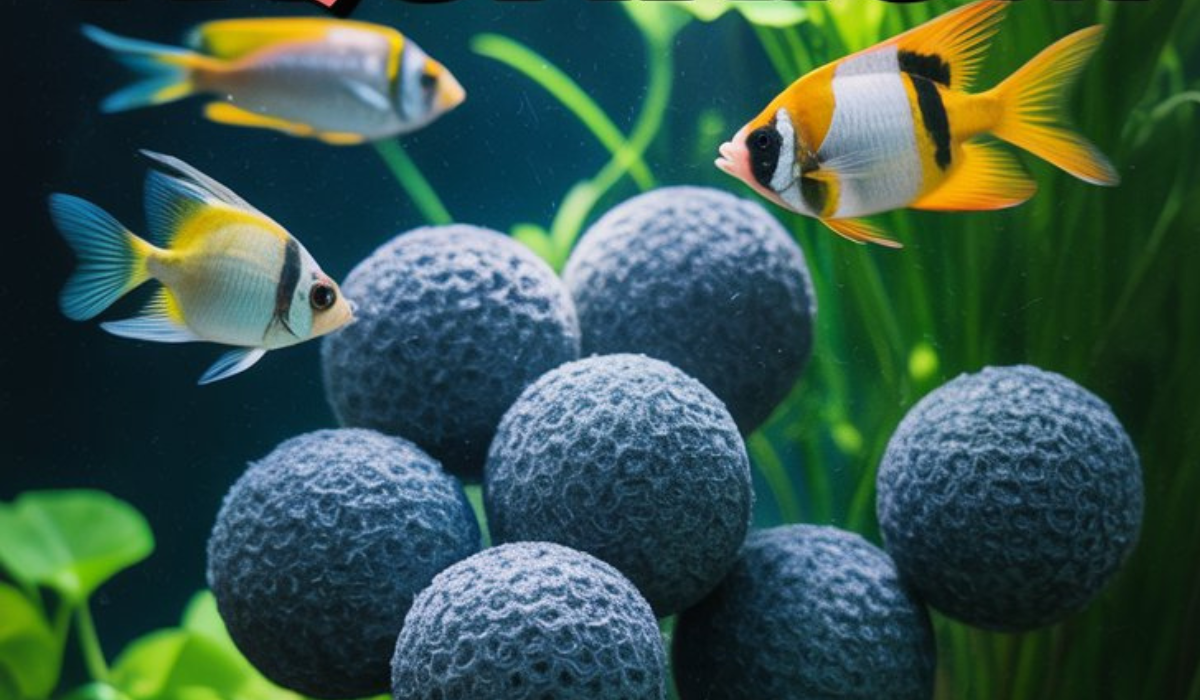Aquariums are delicate ecosystems that depend on a balance between fish, plants, and microorganisms. One of the most crucial aspects of maintaining this balance is filtration, specifically biological filtration. Among the most popular biological filter media used in modern aquariums are bio balls.
In this comprehensive guide, we’ll explore what bio balls are, how they work, their advantages and disadvantages, how to use and maintain them, and whether they’re suitable for your specific aquarium setup.
What Are Bio Balls?
Bio balls are small, spherical plastic balls designed to maximize surface area for the growth of beneficial bacteria. These bacteria are essential for the nitrogen cycle — the natural process that breaks down harmful ammonia and nitrites into less harmful nitrates.
Typically made from non-toxic plastic, bio balls have a porous or open-structure design that allows water to flow freely while giving bacteria plenty of space to colonize. They’re most often used in wet/dry trickle filters, canister filters, sumps, and pond filters.

Key Features of Bio Balls
- Lightweight and easy to handle
- Highly durable (lasts for years)
- Resistant to clogging compared to foam or ceramic media
- Designed to promote aerobic bacterial growth
How Do Bio Balls Work in an Aquarium?
Bio balls function as a habitat for beneficial bacteria. When water from your aquarium passes over or through them, it carries with it waste products like ammonia and nitrite. The bacteria that live on the bio balls convert these toxic substances into nitrate, a much less harmful compound that can be managed with regular water changes or absorbed by aquarium plants.
The Nitrogen Cycle Process
- Fish waste and leftover food release ammonia (NH₃) into the water.
- Nitrosomonas bacteria convert ammonia into nitrite (NO₂⁻).
- Nitrobacter bacteria then convert nitrite into nitrate (NO₃⁻).
- Nitrate is removed through water changes, plants, or specialized filters.
This biological process keeps your aquarium safe and stable, preventing toxic spikes that can harm fish and invertebrates.
Types of Bio Balls
While all bio balls serve the same basic purpose, they come in various designs and materials, each optimized for specific setups.
1. Standard Plastic Bio Balls
These are the most common type, featuring an open, lattice-like design. They promote excellent water flow and provide a strong surface for bacterial colonization.
2. Foam-Filled Bio Balls
These have a foam core inside a plastic shell, combining both biological and mechanical filtration. The foam traps debris while the plastic promotes bacterial growth.
3. High-Surface Area Bio Balls
Newer designs incorporate microporous textures to increase surface area, improving bacterial growth and overall filtration efficiency.
Advantages of Using Bio Balls in Aquariums
1. Excellent Biological Filtration
Bio balls are among the most effective biological media available. Their design allows a large number of bacteria to thrive, making them perfect for both freshwater and saltwater aquariums.
2. Low Maintenance
Unlike sponge or ceramic filters, bio balls don’t clog easily and require minimal cleaning.
3. Reusable and Long-Lasting
Made from durable materials, bio balls can last indefinitely with proper care — they don’t break down or lose effectiveness over time.
4. Great Oxygenation
When used in wet/dry filters, bio balls help oxygenate the water as it trickles through, which enhances bacterial performance and supports healthier aquatic life.
5. Suitable for Various Systems
They can be used in aquariums, ponds, reef tanks, and aquaponics systems, making them extremely versatile.
Disadvantages of Bio Balls
While bio balls are highly effective, they also come with some drawbacks.
1. Can Accumulate Detritus
Over time, debris and organic waste can collect between the bio balls, leading to nitrate buildup if not maintained properly.
2. Not Ideal for Denitrification
Bio balls primarily support aerobic bacteria, which convert ammonia and nitrite to nitrate — but not further. They don’t encourage anaerobic bacteria that remove nitrate, so nitrate levels can still rise.
3. Require Pre-Filtration
To prevent clogging and excessive debris buildup, it’s best to use mechanical filtration (sponges or filter pads) before water reaches the bio balls.
Where to Use Bio Balls in Your Aquarium System

1. In Wet/Dry Trickle Filters
Bio balls perform best in trickle filters, where water drips over them in a highly oxygenated environment. This maximizes bacterial efficiency and stability.
2. In Canister Filters
Some aquarists use bio balls in canister filters, though they’re typically less effective there because of lower oxygen exposure. However, they still provide good biological support.
3. In Sumps
In marine and freshwater sump systems, bio balls can be placed in the biological chamber to enhance filtration and maintain stable water parameters.
4. In Pond Filters
Bio balls are excellent for large outdoor pond filters due to their durability and ability to handle high water flow rates.
How to Use Bio Balls in an Aquarium
Using bio balls properly ensures that your filtration system performs optimally.
Step-by-Step Guide:
- Rinse the Bio Balls:
Before adding them, rinse gently in dechlorinated water to remove dust or debris. - Place in Filter Chamber:
Position them in the biological section of your filter — ideally after mechanical filtration media. - Ensure Good Water Flow:
Make sure water can move freely around the bio balls without stagnation. - Avoid Overcrowding:
Do not overfill; leaving some space improves aeration. - Add Beneficial Bacteria Starter (Optional):
Use a bacterial supplement when first setting up or after cleaning.
How to Clean and Maintain Bio Balls

Proper maintenance keeps your bio balls efficient for years.
Cleaning Tips:
- Do not over-clean: Excessive cleaning can remove beneficial bacteria.
- Use aquarium water: When necessary, rinse bio balls in old tank water during water changes.
- Avoid soap or chemicals: These can kill beneficial bacteria and harm your aquarium.
- Periodic inspection: Every few months, check for excessive buildup or slime and rinse gently.
When to Replace Bio Balls
In most cases, bio balls don’t need replacing. However, if they become brittle, cracked, or lose structure over many years, replacement may be beneficial.
Bio Balls vs. Other Filter Media
Let’s compare bio balls with some popular alternatives:
| Filter Media | Main Function | Advantages | Disadvantages |
|---|---|---|---|
| Bio Balls | Biological Filtration | Long-lasting, great oxygen flow | Nitrate buildup if not maintained |
| Ceramic Rings | Biological & Mechanical | Supports both aerobic/anaerobic bacteria | Can clog over time |
| Sponge Filter | Mechanical & Biological | Easy to clean, gentle for shrimp/fry | Limited bacterial surface area |
| Filter Floss | Mechanical | Excellent debris removal | Needs frequent replacement |
| Activated Carbon | Chemical | Removes odor and discoloration | Not for biological filtration |
Conclusion: Bio balls remain one of the best choices for stable biological filtration in large or heavily stocked tanks.
Tips for Maximizing Bio Ball Efficiency
- Pre-filter water to remove large debris before it reaches the bio balls.
- Maintain good water circulation to prevent stagnant zones.
- Use in oxygen-rich environments like trickle filters.
- Combine with other media such as ceramic rings for balanced filtration.
- Monitor nitrate levels and perform regular water changes.
Can You Use Bio Balls in a Freshwater Aquarium?
Absolutely! While bio balls are often associated with saltwater setups, they’re equally effective in freshwater aquariums. They provide excellent bacterial support and help maintain consistent water chemistry.
For best results in freshwater systems:
- Pair with mechanical filtration like sponges or pads.
- Rinse occasionally in tank water.
- Combine with live plants to help reduce nitrate buildup.
Are Bio Balls Safe for All Aquarium Types?
Yes, bio balls are safe for:
- Freshwater aquariums
- Saltwater aquariums
- Reef tanks
- Koi ponds
- Aquaponics systems
They are made from inert, non-toxic plastic and do not leach harmful chemicals.
Environmental Impact and Sustainability
Most bio balls are made from recyclable plastics, and because they last for years, they generate less waste compared to disposable filter media. However, eco-conscious aquarists can also explore biodegradable alternatives now entering the market.
Troubleshooting Common Issues with Bio Balls
1. High Nitrate Levels
This usually indicates excess detritus accumulation.
Solution: Pre-filter water and clean bio balls gently every few months.
2. Reduced Water Flow
Overpacked bio chambers or buildup can restrict flow.
Solution: Rearrange bio balls and check for clogs.
3. Bad Odor
This may result from anaerobic conditions.
Solution: Improve aeration and circulation in the bio chamber.
DIY Bio Ball Alternatives
If you’re on a budget, you can create DIY biological media with similar benefits:
- Plastic bottle caps (cleaned thoroughly)
- Cut pieces of plastic mesh
- Ping pong balls (drilled for texture)
However, professional bio balls are far more effective and durable than homemade options.
Conclusion
Bio balls are an exceptional biological filtration medium that helps maintain a stable, healthy aquarium environment. They support the nitrogen cycle, prevent toxic buildup, and ensure your fish and plants thrive.
While they require minimal maintenance, combining them with other filter media and performing regular water changes ensures long-term success. Whether you maintain a freshwater tank, reef setup, or koi pond, bio balls are a reliable and cost-effective solution to biological filtration.
FAQs About Bio Ball Aquarium
1. What are bio balls used for in an aquarium?
Bio balls are used for biological filtration, providing a surface for beneficial bacteria that break down harmful ammonia and nitrites.
2. Can bio balls replace other filter media?
Not entirely. They complement other media like sponges or ceramic rings but don’t replace mechanical or chemical filtration.
3. Do bio balls need to be cleaned?
Yes, occasionally. Rinse them gently in old aquarium water during maintenance to remove debris.
4. How many bio balls do I need for my aquarium?
It depends on tank size and bioload, but roughly 1 liter of bio balls per 50 gallons of water is a good rule of thumb.
5. Can bio balls reduce nitrate levels?
No, they only convert ammonia to nitrate. You’ll need water changes, plants, or denitrifying media to remove nitrate.
6. Are bio balls reusable?
Yes. With proper care, bio balls can last indefinitely without losing effectiveness.
7. Can I use bio balls in a freshwater tank?
Definitely! They’re suitable for both freshwater and saltwater aquariums.
8. Should I replace bio balls?
Only if they become brittle or damaged after many years of use.
9. Can bio balls work without a filter?
They need water movement to function properly, so they should always be used with a filtration system.
10. Do bio balls float or sink?
Most bio balls float when new but may sink slightly over time as bacteria colonize them.

